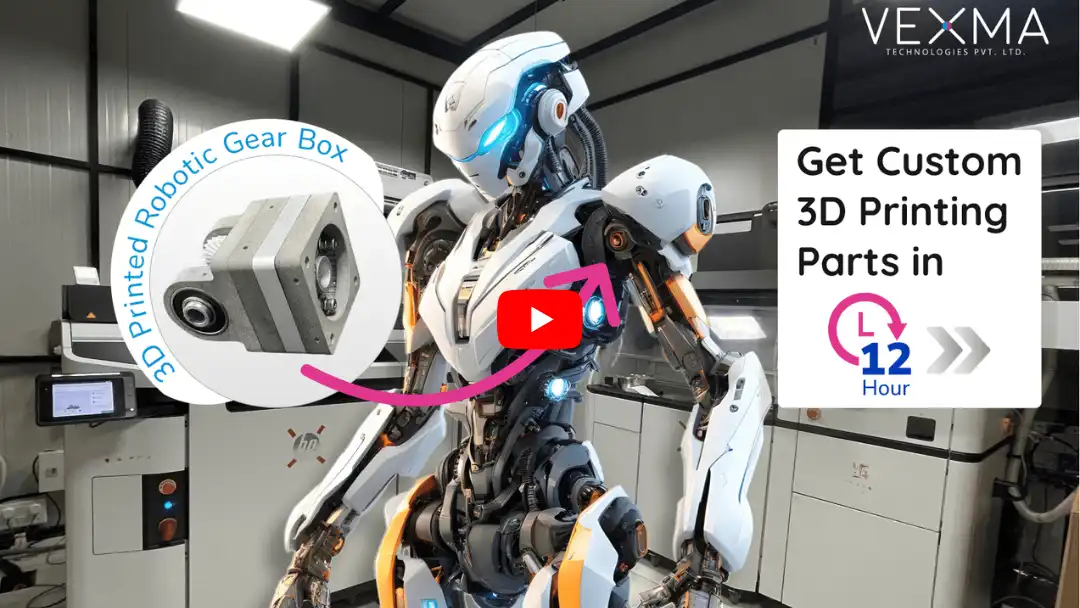Transforming Robotics with High-Quality 3D-Printed Parts
In the rapidly advancing field of robotics and automation, motion control plays a critical role in ensuring efficiency, accuracy, and seamless operation. A robotic system's performance heavily depends on the quality of its components, particularly the gearbox. Traditionally, manufacturing these components required extensive machining and high production costs. However, 3D printing technology has revolutionized the production of robotic gearboxes, offering lightweight, high-strength, and custom-designed solutions for motion control applications.
This blog explores the advantages of using 3D printing for robotic gearboxes, the materials and technologies involved, and how this innovation is shaping the future of automation.
Why 3D Printing for Robotic Gearboxes?
1. Faster Production and Prototyping
Conventional manufacturing methods for robotic gearboxes involve CNC machining or casting, which require long lead times and high costs. With 3D printing, production is streamlined, reducing lead times from weeks to just a few hours. This is particularly beneficial for rapid prototyping, where multiple design iterations can be tested efficiently without additional tooling costs.
2. Lightweight and High-Strength Materials
The weight of robotic components directly impacts performance, power consumption, and speed. By utilizing advanced 3D printing materials, robotic gearboxes can be both lightweight and highly durable.HP Multi Jet Fusion (MJF) – PA12: This thermoplastic material provides excellent mechanical strength, making it ideal for durable plastic components that require high precision.
Selective Laser Melting (SLM) – AlSi10Mg: A lightweight aluminum alloy that ensures strength while reducing overall weight, enhancing efficiency in robotic applications.
3. Complex Geometries with Zero Design Constraints
Traditional machining methods have limitations in producing intricate gearbox designs due to tool access constraints. 3D printing eliminates these barriers, allowing for highly complex and efficient internal structures that improve torque transmission, reduce backlash, and optimize gear ratios.
4. Customization and Tailored Designs
Different robotic applications require specific gearbox designs, whether for industrial automation, medical robotics, or humanoid robots. 3D printing enables full customization of gearboxes, allowing engineers to design components with unique torque, speed, and efficiency requirements tailored to their specific needs.Applications of 3D Printed Robotic Gearboxes
1. Industrial Automation
Manufacturing and assembly line robots require high-precision motion control. 3D-printed gearboxes improve efficiency in conveyor systems, robotic arms, and automated material handling equipment.
2. Humanoid and Assistive Robotics
Robotic exoskeletons and humanoid robots demand lightweight and compact motion systems. Additively manufactured gearboxes provide smooth, human-like movement with reduced power consumption.
3. Medical and Prosthetic Robotics
Precision is critical in medical applications. 3D-printed robotic gearboxes are used in surgical robots, prosthetics, and rehabilitation devices, where smooth and controlled movement is essential.
4. Automotive and Aerospace Robotics
From self-driving cars to automated manufacturing in the aerospace industry, 3D-printed robotic gearboxes enhance reliability and performance while minimizing weight and energy usage.Future of 3D Printing in Robotics
As 3D printing technology continues to evolve, its impact on the robotics industry will only grow. Future advancements in multi-material printing, AI-driven design optimization, and bio-inspired structures will further enhance gearbox performance. The ability to print high-performance, application-specific robotic components will redefine automation, making robots more agile, efficient, and cost-effective.
Are you ready to revolutionize your manufacturing process?
3D printing is transforming robotic motion control, making manufacturing more agile, efficient, and innovative. Whether it’s for automation, AI-driven robots, or prosthetics, our 3D-printed robotic gearbox is the future of motion control. Looking for custom 3D-printed robotic parts? Get them in just 12 hours with our cutting-edge MJF & SLM technologies!
For more videos visit our YouTube Channel:https://www.youtube.com/@Vexmatech/videos





